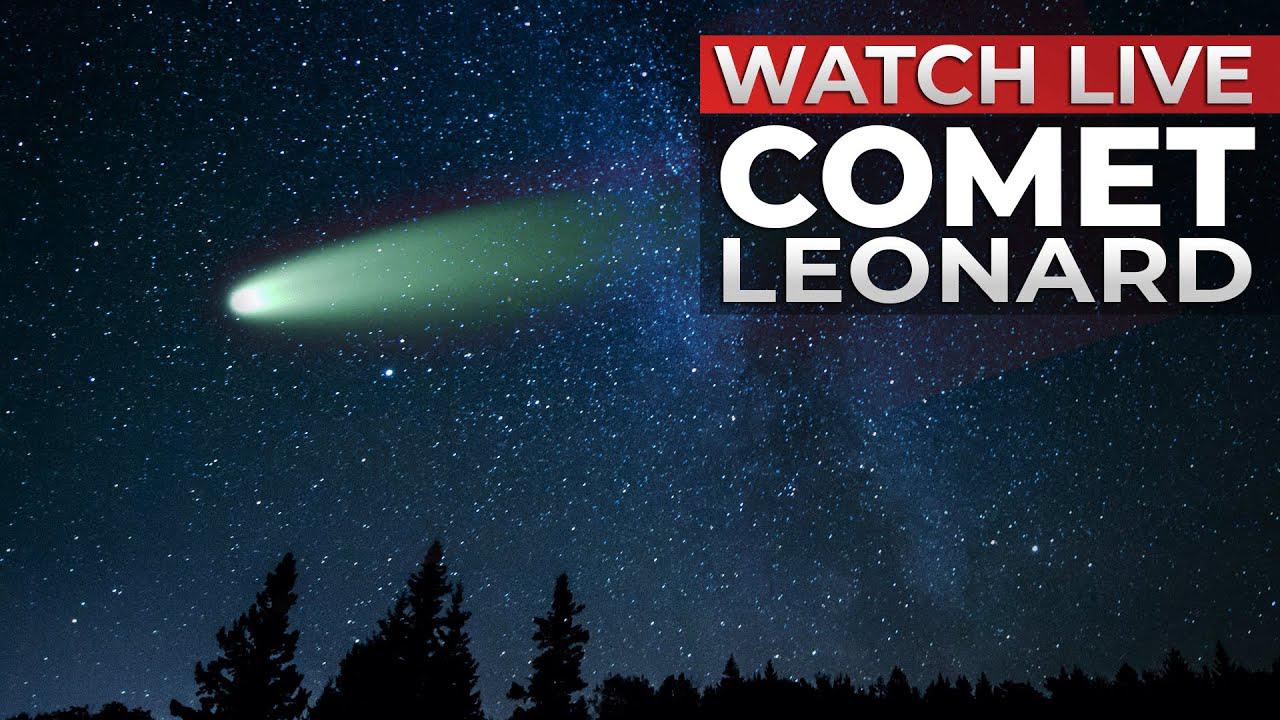
Comet Leonard Does Rare Earth Flyby This Month, Here’s How to Spot It

A comet discovered on January 3 of this year by astronomer and senior researcher at the University of Arizona Gregory J. Leonard is visible from Earth this month. The comet was first observed at the Mount Lemmon Observatory just outside of Tucson, Arizona.
When Comet Leonard was first discovered it was near the orbit of Jupiter and extremely dim in the sky, but now that it’s closer to Earth it will be “the brightest comet this year,” Robert Lunsford of the American Meteor Society told USA TODAY.
“The comet is in the early morning sky right at the moment, and that means getting up very early, probably around 5:00 a.m. or so and looking more or less to the northeast,” astronomer and director of the Griffith Observatory in Los Angeles Ed Krupp told NPR.
“The comet will just be about half the width of a clenched fist to the left” of Arcturus, Krupp said. “You might spot it with the unaided eye, but more likely, you’re going to need binoculars [or] a telescope.”
Peter Veres, an astronomer at the Minor Planet Center at the Harvard-Smithsonian Center for Astrophysics, told NPR that Leonard might be visible with the naked eye, but “you will need to be in a dark environment, far from the city.”
Tonight, the comet will pass by cluster NGC 5466, a.k.a. the Snowglobe Cluster, reported Space.com. And, for those who prefer to stay indoors to view the comet or cannot see the comet due to light pollution or weather, the Virtual Telescope Project, based in Rome, will be presenting a webcast of comet Leonard on Dec. 7. “That webcast will start at 11 p.m. EST (0400 GMT) when the Earth is close to the comet’s orbital plane or path through space, which should provide a relatively bright view, according to [project founder Gianluca] Masi,” reported Elizabeth Howell of Space.com.
A good time to view comet Leonard, or C/2021 A1, will be on Monday morning, when it will be visible low on the horizon near Arcturus, a star in the constellation Boötes, also known as the Herdsman, NPR reported. “There’s an easy way to find it: Follow the curve of the Big Dipper (in Ursa Major) out past the end of the handle. The next bright star you see will be Arcturus. A good memory aid is to remember that from the Dipper handle, you ‘arc to Arcturus,’” reported Scott Neuman of NPR.
“Observers may get their last peek at Leonard steeped in morning twilight on December 12th — and near peak brightness — before it transitions into the evening sky. Fortunately, the Moon will be absent throughout the best part of its morning apparition,” reported Bob King of Sky & Telescope.
You’ll get another chance to view Leonard in the evening later this month if you miss the comet in the morning, Krupp told NPR. “The optimum time [in the evening] probably is from … Dec. 17 on,” he said. “This time, look for the planet Venus to the southwest. The planet is the brightest object in the sky after the sun and moon. The comet will be between Venus and the horizon,” Neuman of NPR reported.
“Masi told USA TODAY Leonard is a long-period comet, meaning it doesn’t come around often. In fact, the comet hasn’t passed by Earth in over 70,000 years, and after it passes by the sun, it will be ejected from our solar system, never to be seen on Earth again,” reported Jordan Mendoza of USA TODAY.
Cristen Hemingway Jaynes is a writer of fiction and nonfiction. She holds a JD and an Ocean & Coastal Law Certificate from University of Oregon School of Law and an MA in Creative Writing from Birkbeck, University of London.

 233k
233k  41k
41k  Subscribe
Subscribe 